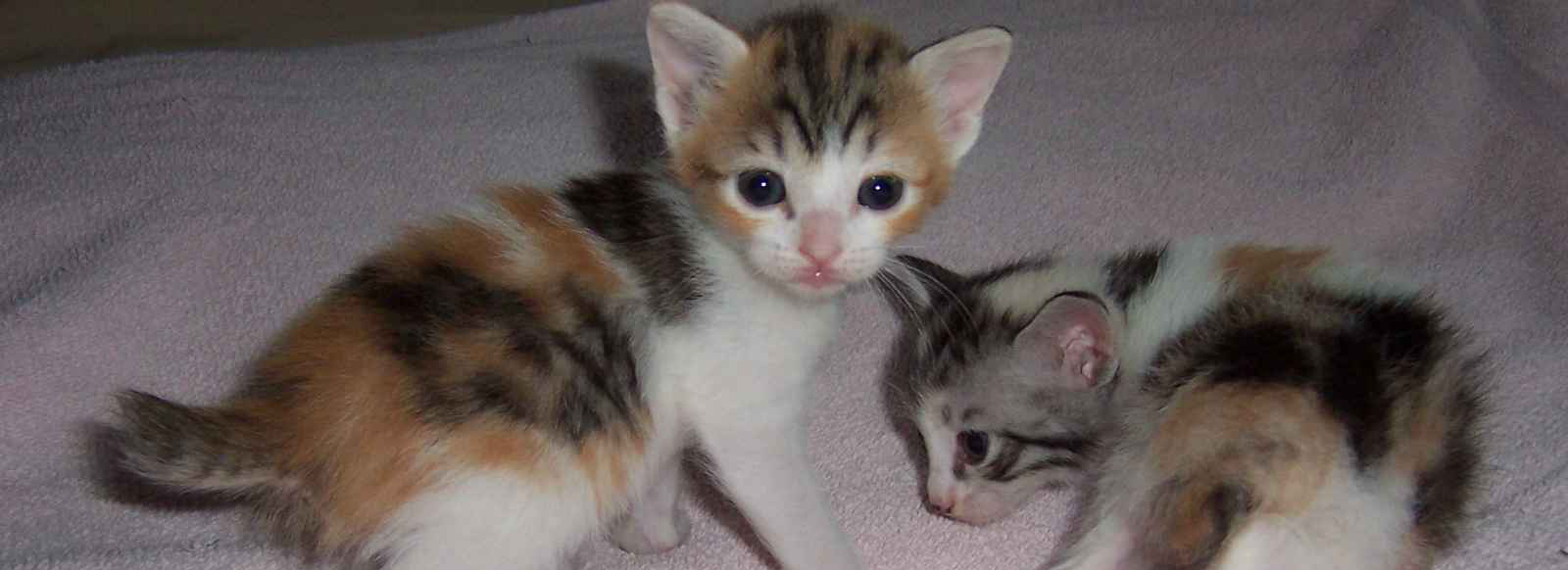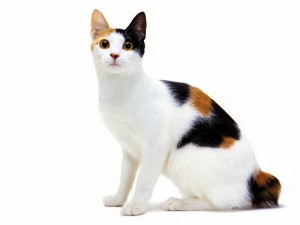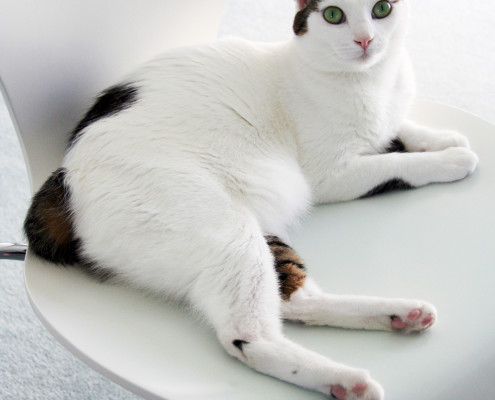Japanese Bobtail

Meoww!!
The Japanese Bobtail is blessed with healthy genes and a high resistance to many diseases. Its average life span is between 15 and 18 years.
In 5 Words
- Smart
- Intelligent
- Playful
- Energetic
- Sweet
Snapshot
WEIGHT RANGE:
Male: medium: 8-12 lbs.
Female: small: <8 lbs.
EYE COLOR:
Amber, Aqua, Blue, Copper, Green, Gold, Hazel, Odd-eyed, Orange, Yellow
EXPECTATIONS:
Longevity Range: 9-13 yrs.
Social/Attention Needs: High
Tendency to Shed: Low
COAT:
Length: Short, Medium, Long
Characteristics: Silky, Straight
Colors: White, Black, Red, Brown, Blue, Cream, Mi-Ke, Tortoiseshell, Silver, Dilute Tortoiseshell
Pattern: Solid Color, Tortoiseshell, Bicolor, Tricolor/Calico, Tabby, Ticking, Smoke, Shaded
Less Allergenic: No
Overall Grooming Needs: Low, Moderate
CLUB RECOGNITION:
Cat Association Recognition:
CFA, ACFA , FIFe, TICA
Prevalence: Rare

Characteristics
Learn About the Japanese Bobtail
The Japanese Bobtail has been known in Japan since the 6th century. The Gotokuji Temple and the Niko Temple still display antique Japanese woodcuts and paintings that portray the Japanese people’s love for their special bobtailed cat. The Japanese Bobtail is considered to be a naturally occurring breed and was not affirmatively created.One theory of short-tailed cats in Japan indicates that they arrived from the Asian continent at least 1,000 years ago. In 1602, Japanese authorities decreed that all cats should be set free to help deal with rodents threatening the silk worms.In 1968, Elizabeth Freret is the first known person to have imported the Japanese Bobtail to the Western Hemisphere from Japan. The breed was accepted for Championship status in the Cat Fanciers’ Association in 1976. Written records and paintings document the existence of the Japanese Bobtail in Japan for at least 1,000 years in both coat lengths. A 15th century painting in the Smithsonian Institute in Washington, DC shows two longhaired bobtails with their coats parted down their backs and a feathery pom-pom for the tail. There are also sketches of the Japanese Bobtail sitting next to geishas. As with other ancient breeds, there are many legends and traditions surrounding its origin.Now ranked 24thth in popularity among the CFA-recognized breeds, the shorthaired Japanese Bobtail was granted championship status in 1976 and its longhaired version accomplished this achievement in 1993.. These ceramics are believed to bring fortune and health to their owners.
The Japanese Bobtail is a medium sized cat with long clean lines. Its body is long, lean and strong, level from hip to shoulder with the hind legs much longer than the forelegs. The body is long, lean and elegant, and shows well-developed muscular strength without coarseness. It’s nottabular like the Siamese nor cobby like the Persian. The legs are long and slender but not dainty or fragile in appearance, ending in oval paws. The hind legs are noticeably longer than the forelegs, but deeply angulated when the cat is standing relaxed so the torso remains nearly level. Adult males weigh 7 to 10 pounds; adult females weigh 5 to 7 pounds.Its large eyes, short muzzle, prominent cheekbones, and huge, low-set ears create a characteristic elfin look.
The Japanese Bobtail personality is outgoing, friendly, active, intelligent and talkative, even entering into entire conversations with “their” people. Although Japanese Bobtails like to talk, they are not noisy and do not have loud voices, though they may make an amazing range of sounds.Bobtail is an active, sweet, loving and highly intelligent breed. They love to be with people and play seemingly endlessly. They learn their name and respond to it. They bring toys to people and play fetch with a favorite toy for hours. These are active cats that love exploring and are curious about their environment.They have a soft, sweet, melodious voice and tend to use this sing-song voice in order to persuade people to give them their every desire. The Japanese Bobtail is a highly personable cat that loves to be in the company of people.
Japanese Bobtails are generally strong, healthy cats with high resistance to diseases. All pedigreed cats have some sort of health problem, just as all people have the potential to inherit a particular disease. Any breeder who claims that her breed has no health or genetic problems is either lying or is not knowledgeable about the breed. Run, don’t walk, from any breeder who does not offer a health guarantee on kittens, who tells you that the breed is 100 percent healthy and has no known problems, or who tells you that her kittens are isolated from the main part of the household for health reasons.
Japanese Bobtail needs is regular nail trimming and ear cleaning if the ears look dirty. . Brush the teeth frequently with a vet-approved pet toothpaste for good overall health and fresh breath.Japanese Bobtail will need regular brushing and combing to prevent the build up of knots and tangles.






